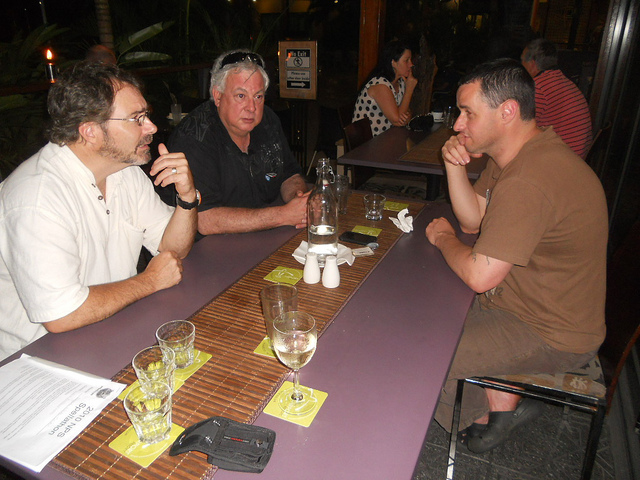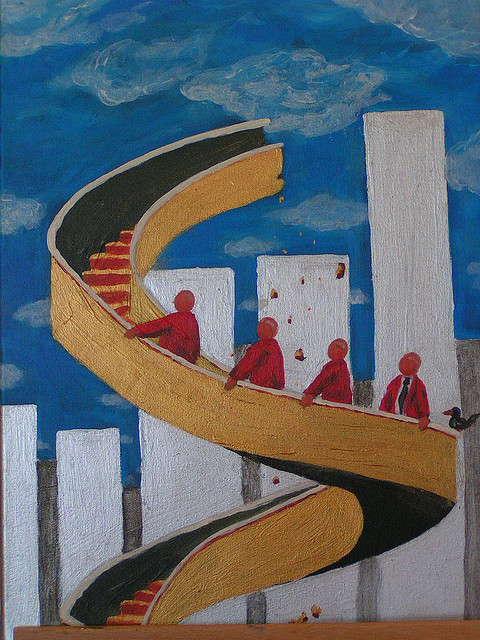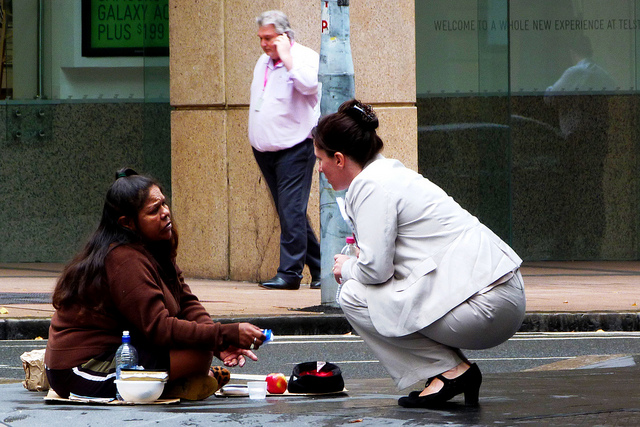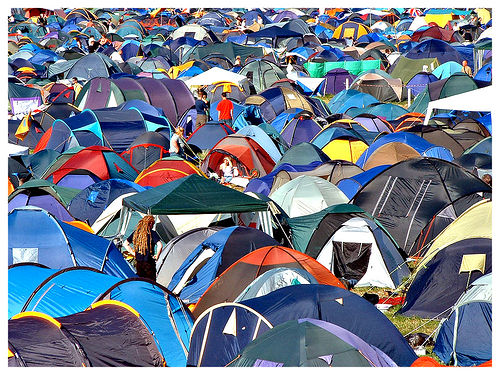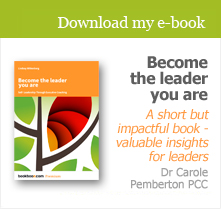opinion
The only thing that’s constant is change
The only thing in life that’s constant is change.
And yet so many of us at so many points in our careers find change – or more accurately, transition (i.e. the experience of change) – challenging, stressful and a significant test of our resilience.
The pressures are multifaceted
Leaders have change imposed upon them through, for example, merger or acquisition, or they may be moving into new roles, to new organisations, new cultures, or new countries. The demands to deliver results in a strange environment with an unfamiliar political agenda, new strategic relationships to work out and develop, and often a family’s needs to consider too, can stretch resilience and sap stamina. The pressures are multifaceted, and the difficulty of gaining a foothold on the parameters of a new life, at the same time as juggling factors they don’t yet properly understand, can create yet more pressure for the leader alongside what can be an exciting moment.
How to manage yourself through the transition
It’s a moment when they need to call on their strengths (both those they know and those they may need to discover), their values and their sense of purpose, and manage their vulnerabilities and those aspects of their behaviour that trip them up and inhibit their effectiveness. They need to be aware of the effect of the changes on them and on those around them (new colleagues will also be impacted, and may be feeling cautious or apprehensive). They need also to acknowledge the contributions of those who are already established in the new environment, and indeed who may have left the organisation.
The new broom sweeping too clean too fast can cause an abrasive effect whose consequences may reverberate long into the future.
The need to build resilience
I’ve worked with numbers of highly accomplished leaders who have been promoted internally or who have been recruited from outside their new organisations and/ or from other countries. They need to engage with what the new role is really about, with behaviours of their own that take them by surprise because they’re not working as well as they did previously (or indeed that have different implications in the new role), and sometimes with a temporary loss of confidence while they find their feet.
They need to rediscover internal resources and call on (or build) fresh sources of resilience.
What resilience is
Dr Carole Pemberton’s recently published book ‘Resilience: a practical guide for coaches’ defines resilience in relation to human behaviour as ‘the capacity to remain flexible in our thoughts, feelings and behaviours when faced by a life disruption, or extended periods of pressure, so that we emerge from difficulty stronger, wiser and more able’.
This definition isn’t about coping, but rather about people’s capacity to constantly adapt and constantly build their own resources to face the next challenge. It makes supreme sense to me, especially in the context of executive coaching, which for me is about the client equipping themselves to achieve greater and greater success at work through a depth of awareness which enables them to become more of who they already are.
The critical role of a sense of self
Carole Pemberton’s research, which revealed that loss of resilience was linked to loss of access to an identity that was key to people’s sense of self, resonates loudly for me. The clearer an individual’s sense of who they are, the more grounded they will be and the more at ease in their own skin – which will give them a firm platform on which to face life’s adversities.
This is even more relevant at times of transition, when a certain amount of what they have taken for granted is either no longer there or does not have the same meaning any more. In such situations, people – including leaders – can lose touch with their sense of self, with who they are in relation to their context, and with their sense of place.
Routes to building resilience
Recovering that sense means they can also recover their resilience – which is where coaching to build resilience can bring value: clients can learn what has kept them resilient in the past, the resources and strengths they have called on and those they can now build, the behaviours and thinking patterns that serve them best.
Two factors which the author highlights in the book seem to me to be especially pertinent, and are borne out by my own experience of coaching executives. One is the link between resilience and written narrative (she highlights that when clients are in the midst of difficulty writing has its greatest power). The other is the link between resilience and meaning, written about so movingly by Viktor Frankl in ‘Man’s Search for Meaning’, an insight into how concentration camp inmates, starving, sick, terrified and abused, lived through the experience: those who had shaped a purpose that gave them a reason to live were those more likely to survive their appalling conditions.
The relevance of resilience to what can be the challenging process of transition becomes more striking the more one studies it.
Photo by dreamattack via Compfight
Resilience and transition: an intimate connection
The relevance of resilience to what can be the challenging process of transition is striking. Leaders have change imposed upon them through, for example, merger or acquisition, or they may be moving into new roles, to new organisations, new cultures, or new countries. During these transitions they need to rediscover their internal resources and call on (or build) fresh sources of resilience. The path to (re-)building resilience can be eased by written narrative and (re-)discovering purpose and meaning.
Read more »Building organisational wellbeing
A meaningful approach to organisational wellbeing will go significantly beyond tactics and process. Building and nurturing wellbeing has to be a way of being (albeit complemented by a set of actions) if it is to bring any significant results. It is part of the organisational culture – how people are with each other. Wellbeing is everyone’s issue: it is systemic.
Read more »The challenge of leadership: what’s needed now?
The recent Sadler Heath event 'What's Needed Now?' - focused on an 'exploration of listening for the right thing to do' - highlighted big themes for me in relation to the role of leadership, responsibility, dialogue, and connection with the system.
Read more »Wellbeing: a direct impact on the bottom line
Organisations with high levels of wellbeing retain their people and in many other ways too, profitability, efficiency and effectiveness increase as wellbeing increases. Positivity breeds positivity. A sense of purpose – which gives meaning to an organisation’s work and the work of its employees – is a critical factor in the building and sustaining of wellbeing.
Read more »Leading across Cultures
To work effectively with difference, the starting point is to understand and be aware of oneself: behaviours, emotions, interpretations, assumptions, and the impact of assumptions. It means taking a holistic view, being curious, and holding back from making judgments of the worth of this or that person, or from jumping to conclusions. Leaders who are culturally aware create sub-cultures of greater trust, more effective communication, healthier relationships and leadership that releases infinitely more potential.
Read more »Factors in managing the executive career
Executives who have taken their careers in hand in a holistic sense, thinking ‘whole-life’ rather than simply in terms of the next apparently logical step on the ladder, are more likely to enjoy career longevity and deliver the fullest value for themselves and their organisations. The Wittenberg Career Coaching Model weaves together multiple factors within multiple perspectives to take account of this ‘whole-life’ approach.
Read more »Your personal brand: a marketable identity
Your personal brand conveys what makes you compelling, memorable and interesting, and becomes increasingly important the more senior the roles you take on. Expressing your personal brand relates to your passions and the sources of your personal fulfilment, your values and your achievement, your strengths and your reputation, your personal vision and your thought leadership.
Read more »Leadership coaching
Leaders who embrace the process of learning and raising their levels of self-awareness, self-understanding, understanding of others and understanding of the systems and contexts they operate within stand to gain the most from leadership coaching. On their coaching journeys they learn to listen to themselves and see themselves as others see them. They become more authentic, they see more clearly what kind of leaders they want to be, and they discover how to make that happen. They learn how to respond rather than react, in a fuller awareness of the choices they make.
Read more »Managing yourself to lead others
The leader who builds on, and develops, their self-awareness in such a way that they can step back emotionally from situations to put their own thinking on hold, and empathise with the players in those situations, will find that they are more connected with their people, and that higher levels of trust, performance, engagement and discretionary effort – rather than obedience or compliance (and the corresponding ‘jobsworth’ mentality) – are the order of the day.
Read more »Diversity: making more of difference
In order to work effectively with difference, the first two steps for the leader are, first, to understand and be aware of their own thinking, emotional processes and place in their systems, and, second, to adopt a stance of acceptance, humility and celebration of diversity. If the prevailing culture in their team, division or organisation doesn’t acknowledge or value diversity, then the leader needs to change their relationship to that culture (and the relationships within it) rather than try to change it from the outside.
Read more »


